Viva Verona XL SE Triode mono Power Amps
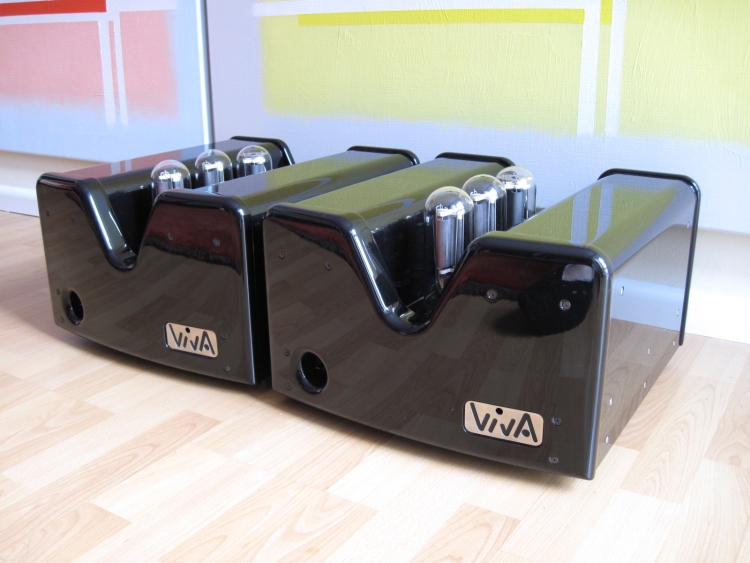
Viva Verona XL reviewed and compared to Jeff Rowland model 6 and McIntosh MA6900
The Viva Verona XL mono Single Ended Triode amps are rare beasts. They are also much larger than they seem on pictures! They were loaned to me by my friend Jan Cramer while he was away on holiday, so I gave them a good workout in two different setups: both my current B&W/Jeff Rowland setup as well as my previous Martin Logan/McIntosh setup.
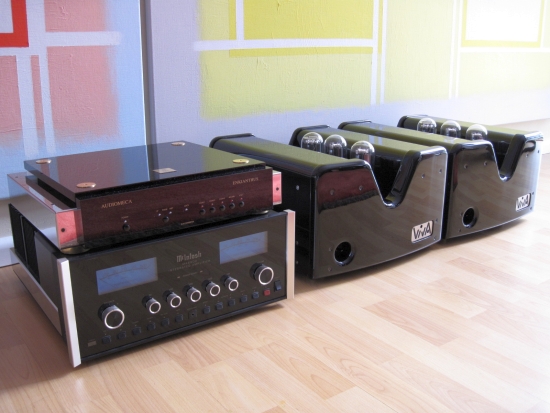
Two setups
Because I felt that the Veronas deserved a thorough review, I figured why not reposition the Logans in their old positions. They were about to be sold and at this time were only standing in a corner doing nothing, like 2 immovable British guards. It seemed fitting to give them a last hearing before they would be sold. It turned out that the new owner came only days after the review was finished so it has been very fortunate timing!
Setup 1
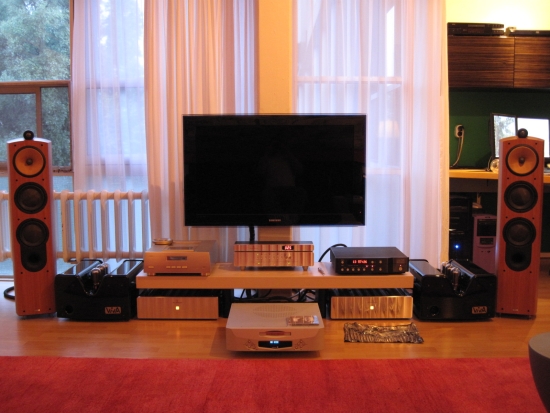
This is my regular setup these days. I know it doesn’t look impressive but it does sound very good. It seems I have found a very good compromise between detail and relaxation. Even though the speakers seem visually out of whack, the sound is very well balanced. The Audio Aero player was used on the floor, on its own pyramid cones.
Prefix
Please note that the first part of the review was carried out using what would later be revealed as worn out tubes. See the bottom part for the update.
First use, fresh from the cold
After lugging these beasts up to my apartment and placing them neatly into position in setup 1, I couldn’t resist hooking them up. The first position was in-between my Rowlands and the speakers. I was only going to listen for a second. After all, the amps were positioned right next to each other and cable swapping was going to be easy as pie. Well it was easy but it wasn’t going to be a quick listen.
Even straight out from the cold (well, it was a summer day, but figuratively speaking) they sounded pretty far from bad. In fact they didn’t differ too much from the Rowland sound I am so used to. Actually I expected a cold sound but what was heard was a warm, inviting and easy on the ear sound. It was as if the Veronas had no problem at all with my usually not so easy to drive B&W N804’s. The bass wasn’t as quick as when driven from the Rowlands but it wasn’t fat and loose tubeyness either. And that from single ended 28 watts…
After they warmed up the sound didn’t change that much to my ears. Maybe it got more enveloping, but it didn’t become warmer or more focused or that sort of thing. I have to admit that at this stage I still wasn’t really reviewing the amps, more just listening out of curiosity. But speaking of warm, boy do these amps get hot! I think that you would seriously burn your finger if you would touch a tube. You need no central heating if you own these amps!
Extended listening
The more I listened, the more I became impressed with the midband. It was voluptuous, round and very colorful. It was definitely better than the Rowland midband, more credible and it was the living, breathing quality in the mids that made me think of the Jadis sound. From memory the Jadis JA30’s sound much rounder and smoother than the Veronas, but both have the communicative part sorted. This is a very distinctive quality that most tube amps seem to have, well, most of the time, but more on that later.
When I started listening more technically (I put my high-end audio measuring instrument-head on) I started hearing more differences. Indeed the Verona’s midband was richer and ripe and I was afraid that I was having to go after such a sound. Would I finally be introducing tubes into my system? It was as if I had the amazing Jeff Rowland Coherence II preamp in my system again. But then I noticed some areas in which the Veronas were noticeably lagging behind the Rowlands.
Downsides
Even though the Viva’s bass was pretty good considering the N804’s are not so easy to drive, it wasn’t as quick and agile as with the Rowlands. But this was something I could easily live with, if it was the only price to pay for that magical midband. Also the highs aren’t as open as those from the Rowlands. This is also to be expected, but in this case they are significantly darker. It’s not just air that’s missing, but also a part of the actual frequency spectrum. This was later confirmed (see below) as even the McIntosh MA6900 was more open, and that amp was darker than the Rowlands, so the Veronas, if they are darker than the Mac, are pretty dark. Now I was getting less enthusiastic. On top of this the Veronas also restricted the dynamics to a large extent. It was again similar to my experience with Jadis amps: great color and midrange, and no electronic character at all, but the music seemed lifeless. It was dynamically compressed. Of course you can’t blame the Veronas for this because, after all, the N804’s are no easy speaker to drive and this probably was a mismatch, but their lack of HF extension is something to consider.
Setup 2
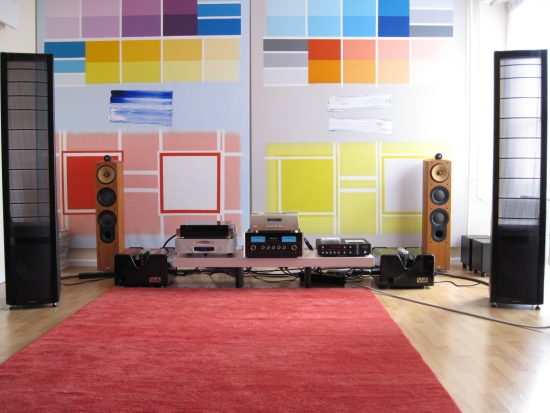
This setup was recreated temporarily because I had the Logans still standing in the corner and I felt like changing the room anyway. That was nice coincidence with the arrival of the Audio Aeroplayer as well as the Viva Verona XL Triode monoblocks. Both were borrowed from a friend and made for a good excuse to re-build my previous system. Well, almost, since the DCS components were gone. But these are all technicalities that are probably only interesting for those who have followed the history of my setup. The B&W N804’s are not used but just stand there being pretty. On top of the Audio Aero sits the Audiomeca Enkianthus. A DAC that will be compared to the DA section of the Audio Aero.
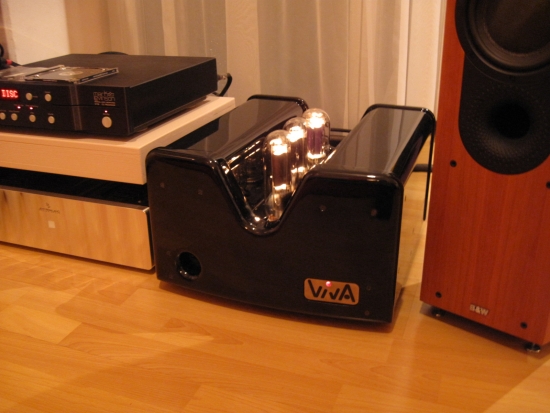
Listening in setup 2
In setup 2 the Veronas actually performed less well, despite the Logans being soundwise a better match than the B&W N804’s. I think that in fact the Logans’ low impedance dip at the top might be difficult for the Vivas and this is making them harder to drive than the B&W’s. Nevertheless, when swapping from the McIntosh MA6900 to the Veronas, there was again a very natural and inviting, smooth midrange, accompanied by good bass. Like in the other setup, bass was not stellar, but was definitely good enough. Coming from a solid state guy, this says a lot:-) The bass was tonally actually not that much different from the Mac bass. But again dynamic compression reared its ugly head, as well as some slowing down of speed, rendering fast-paced music uninteresting. What was portrayed rather well though, was simple jazz and vocals. With other music the dynamic compression and the lack of high frequency extension became too evident, likely again due to the low impedance dip. I guess my speakers are not ideal partners for the Viva amps.
Mac
I didn’t think that I would say this but switching to and fro between the Mac and the Veronas I came to like the Mac better! Maye it is because it also has output transformers, just like the Veronas (and most tube amps, for that matter), but the Mac almost had the same kind of midrange tonality. The bass was timbrally also comparable, but quicker and more powerful. Dynamics and slam? The Mac has plenty. Even more so than the Rowlands, albeit less nuanced at it. Lastly the high frequencies are adequate on the Mac (the Rowlands are admittedly very airy) where the Veronas are dark in this combination.
Perspective
My speakers are demanding. I know, it took me many trial and error phases in order to find a working combination. This may very well be the reason behind the slowing of pace and the lack of dynamics with the Veronas. After all, I had the same experience when I tried some Jadis tube amps and I know that the same Jadis amps are anything but undynamic in the owner’s system. His speakers are the very communicative Sonus Faber Amator II’s. These speakers on their turn sound absolutely horrible when combined with Jeff Rowland amps. So please take this into consideration: system synergy is everything!
Fighting preconceptions: Tubes versus solid state
There are always exceptions to a rule and this matter is no different. Although most tube amps I’ve heard (at the moment of writing only Jadis, Atma-Sphere, Unison Research and Viva) have indeed a relaxed and inviting sound, not all do. The Atma-Sphere MA2 MKII amps are in fact OTL designs and as such have no output transformers. The Atma Spheres in question had 20 tubes per channel and used 1000 watts per side! Anyway, technical matters aside, these amps were so powerful, so very dynamic that they scared me. So much for tubes always sounding “tubey”.
The same goes for transistors. They aren’t always cold sounding. They do tend to be undynamic whenever an amp has been tuned to sound tubey but it can also be done in a good way. For example McIntosh. Whether it is because of the output transformers or not; the amps sounds much like a good tube amp but without the usual deficiencies and my Jeff Rowland model 6’s strikes middle ground, offering best of both worlds, although they could do with a slightly richer midrange like the older designs had. But the old designs were slow and undynamic thereby confirming the rule again:-)
System synergy
I can’t stress this enough: components are as good as the synergistic relation they have with the partnering equipment. For example, the Audio Aero Prestige SACD player performed much better in the B&W/Rowland system than in the Martin Logan system. With the latter it was just too cold, too forward and not smooth enough.
The same goes for the Veronas. Because the combination with these amps is very relaxed, I’d wouldn’t partner them with B&W’s nor with the Mark Levinson no.390s cd player. In fact, the Audio Aero Prestige SACD was pretty synergistic with the Veronas, as were the FIM powercables. These amps really need them for their added kick and dynamics.
More importantly, while very stable and powerful given their design principle, SET amps are not known for their tight bass, and especially not for their capability to drive less than efficient speakers such as the B&W N804’s and Martin Logans pose their own demands on amplification. This means that this entire review is only to be taken as an amusing back drop to what the amps should be really capable of.
I would later learn (July 2017) that SETs can indeed sound not only magical but also very fast and dynamic, when partnered with the right speakers.
Read all about the magical SET experience here
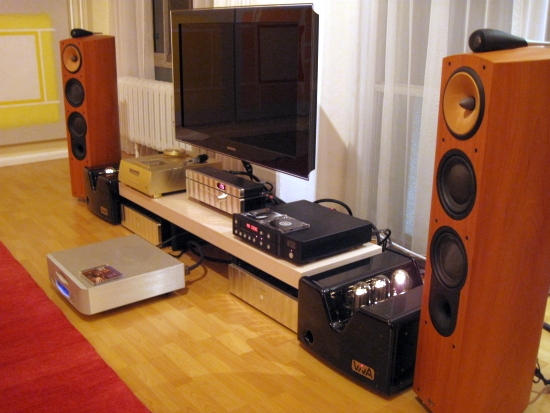
Conclusion 1/2
The Veronas are beautifully made amplifiers, a lust for the eye. They also have a natural, colorful and very friendly sound, never insulting. I like that in equipment. Resolution is about as good as that from a McIntosh MA6900 but lower than that from the Jeff Rowland model 6’s. But resolution alone isn’t what music is about. There’s much more to it. Emotionally they get right to the core. They make music and there’s nothing electronic about it. Their midrange is simply magical, leaving even my beloved Rowlands in the cold. If it weren’t for their lack of HF extension, I’d probably have taken their compressed dynamics for granted.
Ultimately I think they just aren’t powerful enough to drive demanding speakers. Partner them with smaller, more bright and more efficient speakers, and the story may be very different. Sadly I wasn’t in the position to try this out.
Also worth noting is that according to the owner, the tubes are now quite old. I don’t know a great deal about tubes, but could it be that they lose some HF extension toward the end of their lives? And could it even be so that they become less dynamic? Boy, if that is the case, then these probably are some seriously musical amplifiers!
Update 14-8-09
New tubes have arrived!
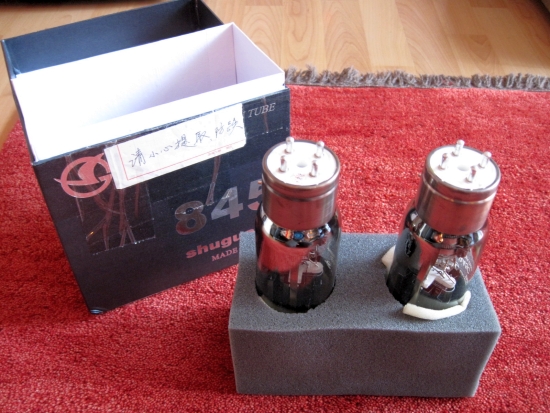
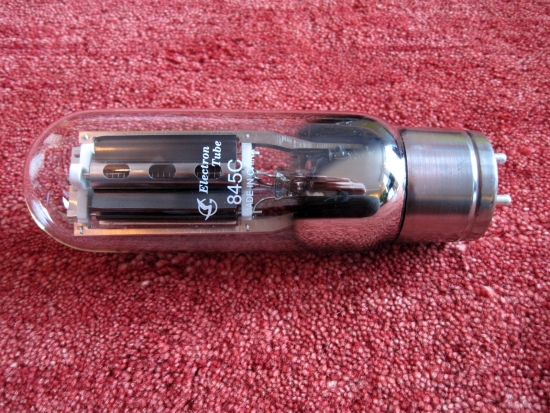
Conclusion 2/2
After fitting the new tubes we immediately heard a huge difference. It was as if we were listening to other amps! Gone was the lazy bass, gone any trace of wooliness and also the speed was much better: the amps now had real PRAT. The mids were slightly more aggressive though and the highs still weren’t as airy, open and fluid as that of the Rowlands. But with certain music styles such as jazz (Patricia Barber) the Viva’s had a vivid colorfulness in the mids that the Rowlands lacked. With electronic or pop music the Rowlands turn in a catchier presentation as well as (amazingly) being more fluid in the highs. All in all then, it’s a tie between the Rowlands and the Viva’s because at this point it comes down to taste and music style that you play.
Update 17-07-2016
The Vivas have now also been listened to with AvantGarde horn speakers, in comparison to Ayon and Vaic Single Ended Triode amps. This time, the conclusion is entirely different.
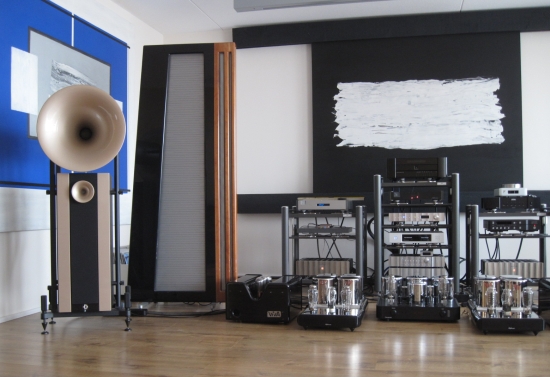
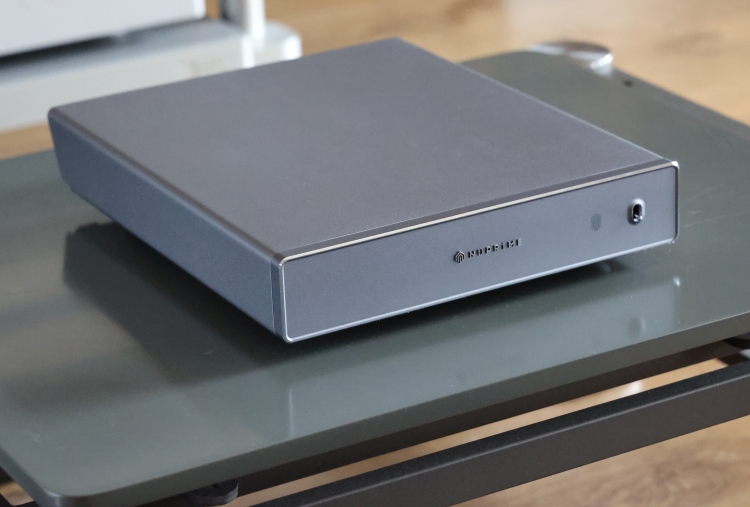
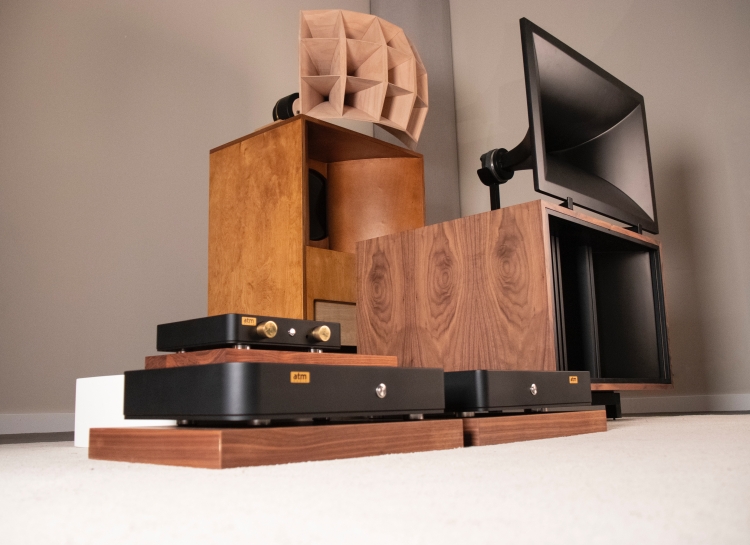
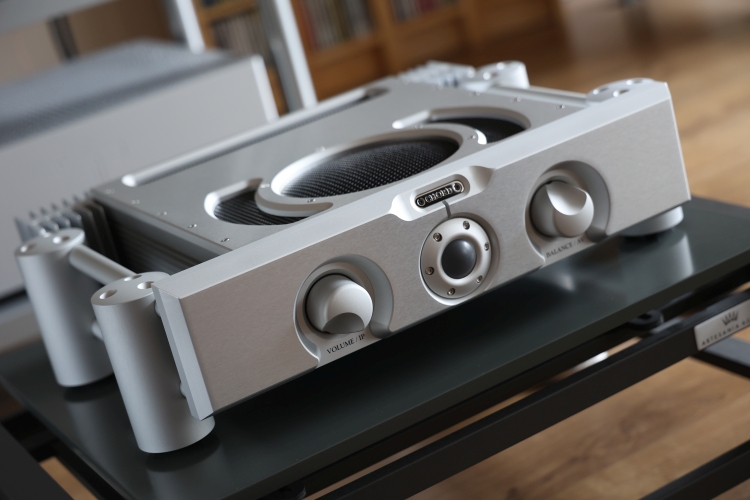
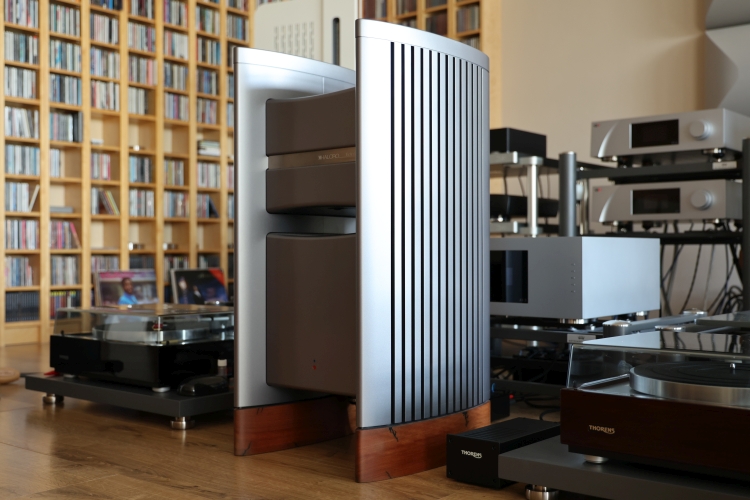
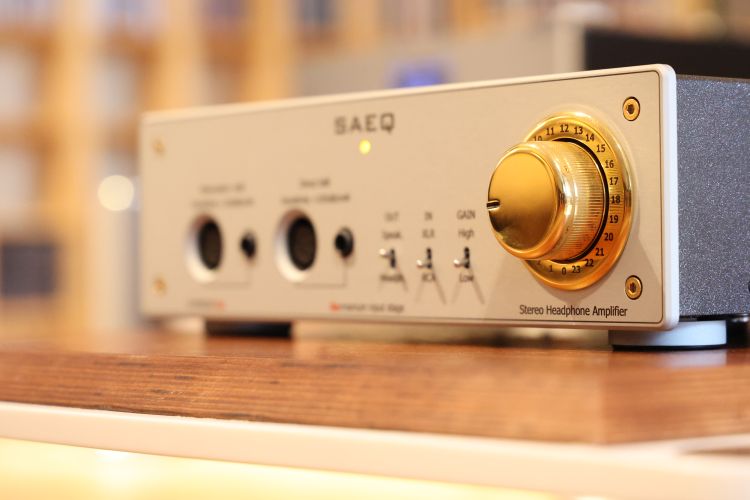
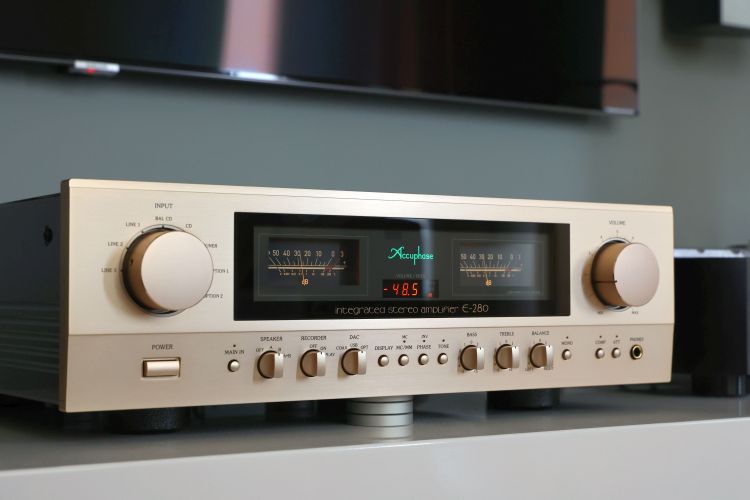
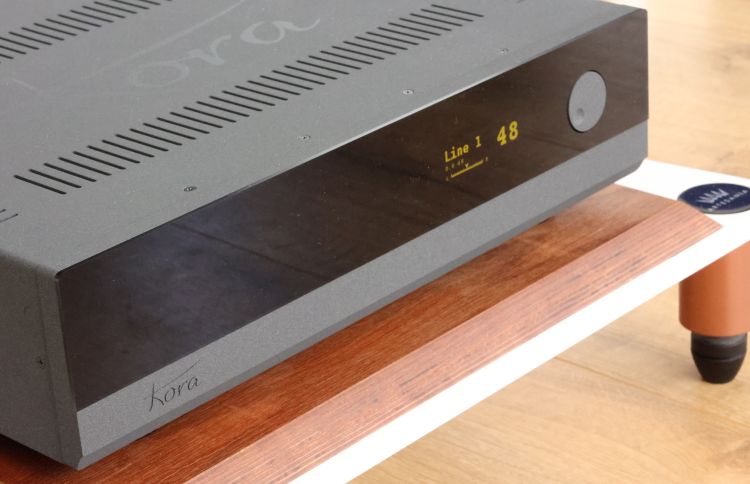
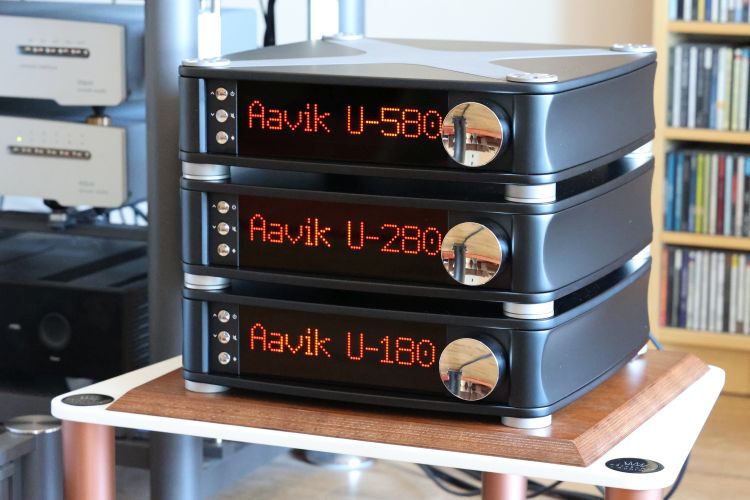
I think you went about this totally the wrong way from initialization by choosing the B&W’s and the Martin Logan’s as your first choices…as this is not what a seasoned audiophile with a SET amp for review would at all expect in regards to pairing.